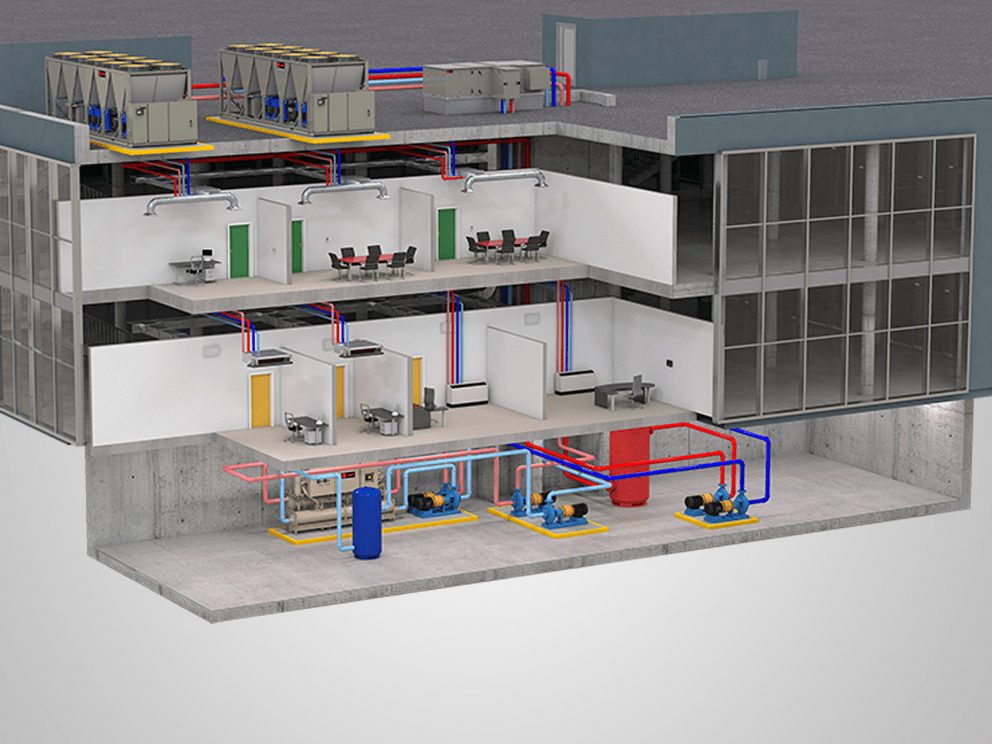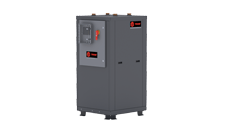Comfortable Growth
Chesapeake Regional Medical Center offers top quality healthcare. Here’s how Trane helped the medical center upgrade its chiller plant and HVAC systems to improve energy efficiency and provide cooling redundancy.
Challenge
Chesapeake Regional Medical Center had developed plans for a 49,000 square feet expansion; however the existing chiller plant did not have the necessary cooling capacity to handle the additional floor space. The medical center also did not have any HVAC system redundancy and wanted to eliminate the CFC refrigerants in the existing chillers.
Solution
Trane made a detailed study of the issues to discover sources and solutions for each problem. The expansion increased cooling requirements by about 150 tons for a total requirement of 1550 tons of cooling capacity. However, the old chiller plant with two 500-ton chillers and 400 tons of thermal storage could not handle the increased load. Trane recommended replacing the old 500-ton chillers with two 1000-ton high efficiency chillers, adding thermal storage tanks and adding plates to the heat exchanger. This provided the additional capacity and N+1 redundancy. A new cooling tower was also needed. The medical center had two 1000-ton cooling towers and a 600-ton cooling tower already in place. The 600-ton cooling tower was replaced with a 1000-ton unit to increase capacity and provide redundancy should a tower fail. The chilled water pumping system was changed from a primary-secondary system to a variable-primary flow system, eliminating three 60-hp chilled water pumps.
A Trane Tracer Summit™ automation system was provided to optimize overall system efficiency and further reduce energy consumption. It operates the chiller plant at night to produce ice in the thermal storage tanks at night and uses the ice for air conditioning during the day when electrical costs are highest.
Results
The new chillers and system improvements reduced operating and maintenance costs, eliminated CFC refrigerants and provided system redundancy. David Jacques, Chesapeake Regional Medical Center Facility Manager, said, “We saw over $100,000 in payback during the first year of operation. Rising fuel surcharges for electrical power have increased our savings to between $150,000 and $200,000 per year. In total, we have saved well over $1million in the eight years we’ve operated the system.”
Chesapeake Regional Medical Center has also saved $10,000 in maintenance costs. The Tracer Summit system allows maintenance personnel to quickly identify and solve problems before the patients and staff feel any discomfort. Bottom line—Chesapeake Regional Medical Center can now treat more patients at lower cost.
About Chesapeake Regional Medical Center
Chesapeake Regional Medical Center is the cornerstone of the Chesapeake Health family. Since opening in 1976, the hospital has grown with the community and added services to improve the health of residents of Chesapeake, southeastern Virginia and northeastern North Carolina. It ranks among the busiest hospitals in Virginia.
“For the first month we saved $12,000 in energy costs and about $8,000 to $10,000 each following month.”
— David Jacques, Chesapeake Regional Medical Center Facility Manager

































































































